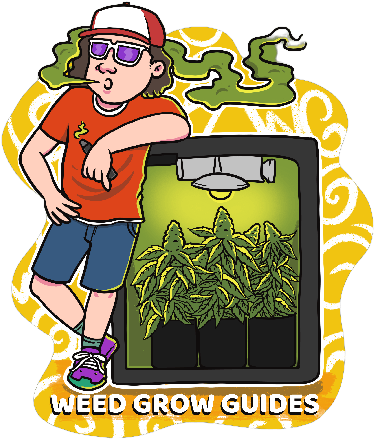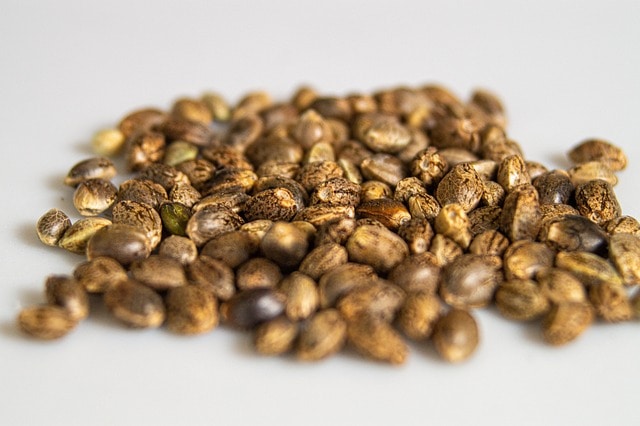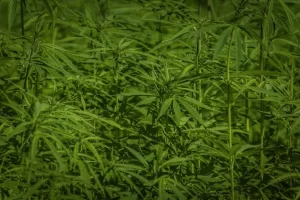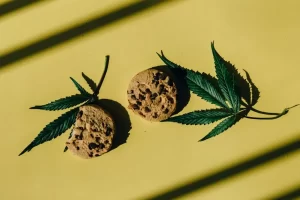Introduction
It’s no secret that growing marijuana is one of the fastest-growing industries in America. In fact, according to stats from Marijuana Business Daily, the legal cannabis industry was worth $10 billion in 2018 and will likely surpass $23 billion by 2024. With more than 30 states now allowing medical or recreational use (or both), it’s no surprise that so many people are interested in growing their own weed

Especially if they live in an area where growing isn’t allowed and trying to prepare for whats to come. Growing marijuana for personal use is surprisingly straightforward and fun! If you’re looking for a new hobby or just want to learn more about the process, here’s everything you need to know about planting those seeds and harvesting your own homegrown bud:

The first step in growing marijuana is selecting a strain
The most important decision you’ll make as you grow your first cannabis plant is choosing the right strain. The overall quality of your harvest is directly related to the strain you choose, so it’s important to do your research before making a purchase.

There are several things to consider when selecting a marijuana strain for growing:
- The type of environment in which you’ll be growing (indoor vs outdoor)
- I recommend indoors for ease of control. Check out my item list by clicking HERE or my step-by-step guide
- Your experience level with growing cannabis plants (beginner vs expert)
- How much space you have available for cultivating plants

Purchase quality seeds from a reputable seed bank
Buying seeds from a reputable seed bank is the first step to growing great marijuana. You want to make sure that you’re buying your seeds from an established company with a good reputation, so that your seeds actually arrive to you and germinate. You can read more about seeds, clones, and my favorite place to buy seeds from HERE.
Start growing marijuana seeds indoors in soil
Soil is the most common growing medium, and it’s easy to work with. It’s also easy to mix nutrients into the soil, making it even more suitable for your plants.
You can easily transplant seedlings from soil into larger containers as they grow (jiffy pellets to fabric pots),
making this a good option if you want to start seeds indoors in a controlled environment before moving them outside once they’re mature enough.
Another benefit of using soil as your growing medium is that harvesting is quite straightforward: You simply dig up your plants and pull out their roots or cut off their stems.
Germinate your cannabis seeds
To get your cannabis seeds to germinate, you’ll need a few things:
- Soil
- Water
- Humidity
- Temperature (ideally around 70 degrees Fahrenheit)
- Air circulation (creates oxygen flow)
Continue growing marijuana by moving your seedlings to larger containers and begin fertilizing
The seedling stage is a time when the plant begins to grow. During this stage, nutrients are the most important thing for your plants. If they don’t get enough nutrients, they won’t grow properly and may even die.
The best way to get them the right amount of nutrients is by adding fertilizer into their soil mix. Fertilizer is a powder or liquid that provides essential nutrients plants need to grow strong and healthy (like potassium). You only want to fertilize your marijuana plants with organic fertilizers or compost because synthetic fertilizers isn’t natural and I like to keep things organic. This also improves the taste of the buds come harvest time.

During this stage of growth, you should also transplant your seedlings into larger containers that have better drainage systems so they don’t get root rot (a disease) which comes from water sitting on the roots too long and poor air flow. This is why I suggest fabric pots as the air circulation with the suggested soil allow the plants to breath and dry out easily.
The vegetative stage of the marijuana growing process
Once your seedlings have reached the first two to three sets of leaves (in this stage the plant is very scrawny and looks like a single shoot easy to break), you can now start the vegetative stage.
During this time, you’ll want to ensure that your plants are getting plenty of light. With too much shade and/or not enough water, your plants will grow tall and spindly ass they reach for light, producing fewer buds (the part of the plant that contains THC). If you provide your plants with a lot of light they’ll grow bushy with lots of buds! You should also make sure the temperature stays at around 70 degrees F or higher—if it gets too cold or hot for them during this stage, they may stop growing altogether until conditions become more suitable again.
You can almost watch marijuana grow because it acts like a weed. If it isn’t growing a few inches minimum each week something is likely slowing the process down.
When choosing how long your plants will stay in their vegetative state before flowering begins—usually between 3-4 months depending on what kind of strain you chose—it’s important not only because it affects how much consumable bud comes out at harvest time, but also because this period plays an important role in building up their strength so they don’t get sick or die while preparing flowering.
Begin the flowering stage of your marijuana plants’ life cycle
Now that your marijuana plants have been growing in their vegetative stage for a while, you will notice that they have begun to change. Their leaves will start to grow smaller and denser than before, and the stem may begin to thicken as well. You may also see small white hairs on the end of these stems—this is known as pistil development.

If you want to harvest buds from your plants at this point in the bloom cycle, then you must stop fertilizer applications. Should use decide to use fertilizers you should stop two to three weeks before harvest. This will cause your plant to search within its own stem and leaves for nutrients, but allow enough time for nutrients to be absorbed by the plant that can support its final flowering process.
The final weeks of the flowering stage
The final weeks of the flowering stage are an exciting time, but it’s also when you need to be especially careful and attentive. The last thing you want is for a male seedling to ruin all your hard work.
The first sign that a plant is male is that its leaves will start growing in a different shape than female plants (they kind of look like mini bananas). If this happens, remove the plant immediately so it doesn’t pollinate any others and this should be done before you switch you females over to flowering!

Once you’re sure all your plants are female, buds are looking nice, then it’s time to start harvesting them! Harvesting means taking cuttings from the plant from the root ball to prepare for drying. You’ll also want to dry and cure them so they’re ready for smoking whenever you want some weed-related fun… Check out my article on my favorite vaporizer and keep an eye out for explaining how to cure your weed.
Click the picture above to learn more about the Pax 3 and why vaporizing your weed is the way to go.
Harvesting cannabis and curing it for use
Once the cannabis has reached its full maturity (usually after three to four months), it’s time to harvest it. Harvesting involves cutting all the buds off of your plant, taking care not to damage any of them in the process. This is done by using pruning shears and making sure you cut just above where the flowers meet their stems.
Once you’ve harvested your buds, you’ll need to dry them thoroughly before storing them or consuming them. Dryness indicates that all moisture has been removed from within each bud—essential for smoking or vaporizing because when moisture remains on a bud during combustion, it creates smoke with an unpleasant taste and odor.
You can dry your harvested buds by hanging them upside down in a cool dark place like a shed or closet for about a week or two weeks; this process should remove remaining moisture from inside each flower to a relative humidity level of 62%.
I place a humidity meter and a 62% bovada pack into each of my jar when you are ready to cure and your plants have got to the desired moisture percentage.
Alternatively, if you want faster results without having to come back daily while waiting for this step in drying out your newly-harvested crop then consider investing in an electric air circulation device that circulates heated air through multiple trays filled with freshly cut marijuana plants—this will speed up natural evaporation while keeping everything evenly distributed throughout drying process! I go the hold fashion route and it is more cost effective for starting out.
Growing marijuana is pretty easy, with a little patience.

If you’re looking to grow weed, here’s the good news: it’s not hard. You just need to be patient, willing to invest some time and money, willing to learn and follow instructions. Okay, so maybe that sounds like a lot of things you have to do before vaping your first bud. But trust me—it’s worth it!
Conclusion
Growing marijuana is a fun, rewarding and an easy process. Just remember to have patience and keep an eye on your plant’s progress throughout the entire growing process.













